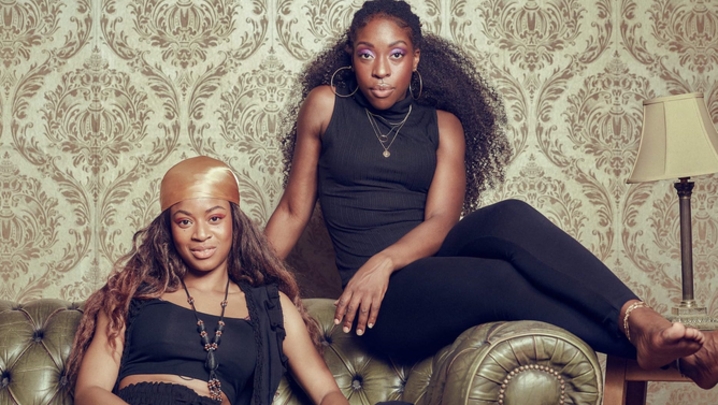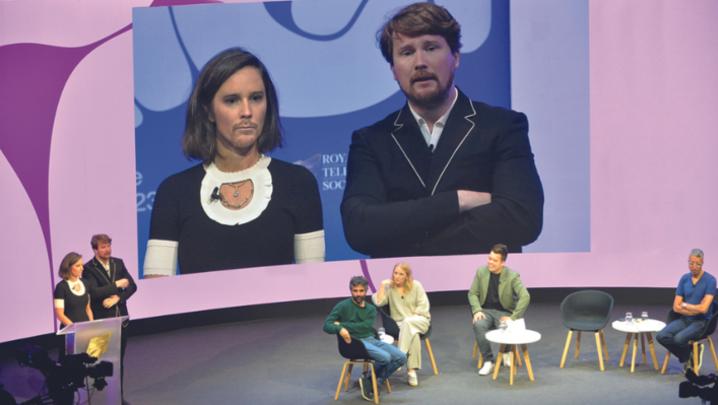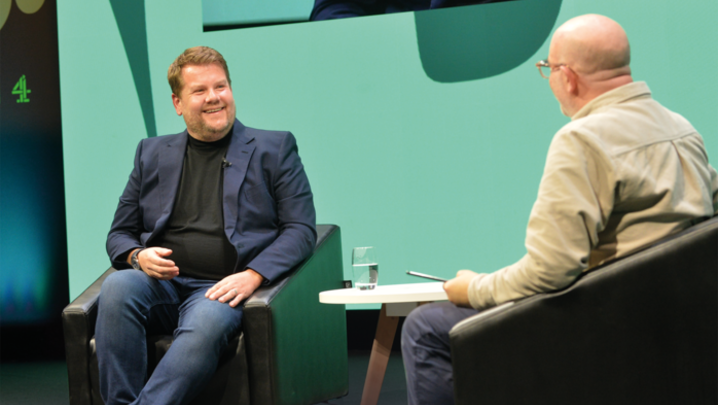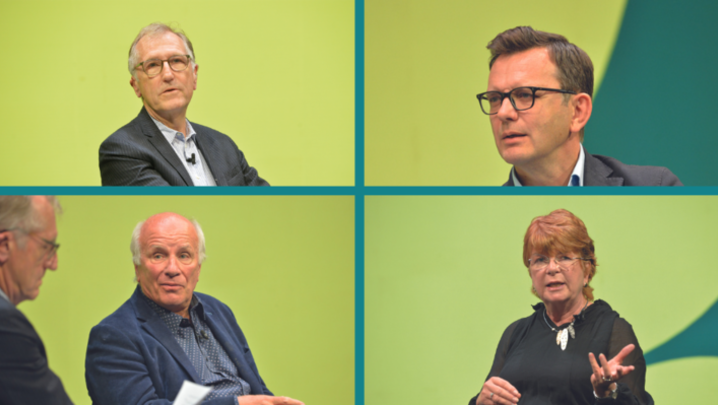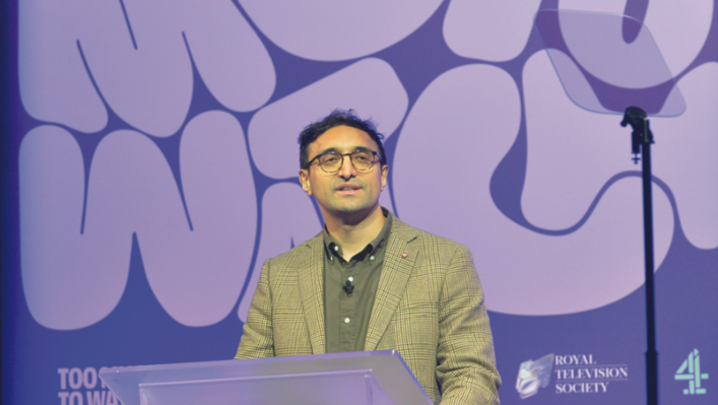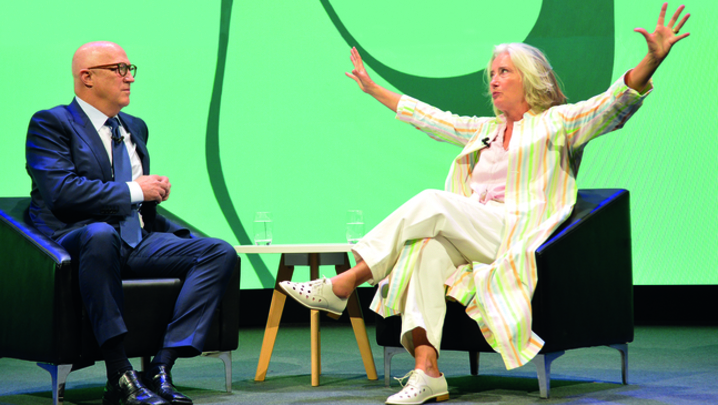Narinder Minhas reviews a radical manifesto for transforming television by Lenny Henry and Marcus Ryder.
Oh, noooo. The D word. Surely not Donald? No, not that D word – the other one. The one that makes your heart sink a little, too. The one that reminds you of years of struggle. The one that tells of endless meetings with fellow campaigners in drab rooms, banging heads against brick walls.
It is diversity, of course. The word that everybody hates, but no one can think of anything better. Don’t get me wrong, diversity is one of the biggest issues facing the British media. And, as an Asian immigrant, who came to this country not speaking a word of English, with working-class parents, it has occupied my thoughts more times than I wish to remember.
But have we really moved on over the past 30 years? Forgive the jaded outlook, but do I really want to plough through Access All Areas: The Diversity Manifesto for TV and Beyond by Lenny Henry and Marcus Ryder? It feels like homework; it sounds like homework.
The reality, however, could not be more different. This is a book that everyone should read. Written in an accessible, punchy style, fizzing with ideas and warmth, with the very distinct voice of Henry beating at its heart, it is an inspiring call to arms. Don’t be put off by the Jane Austen-esque references to “Dear Reader”, this is a modern text with a modern message. It is a political manifesto for today and tomorrow, demanding proper structural change. In fact, it reframes the entire conversation about diversity. And this particular reader, Dear Reader, is inspired.
Turning conventional wisdom upside down, the book starts with a bang, a Big Bang, challenging the very idea that diversity is about the “minority”.
One of the more interesting characters in the book – and there are many – is Susie Symes, who runs a museum in London dedicated to immigration and diversity. She is a former Treasury economist, who knows her stats and does not mince her words. “One of the pieces of lazy thinking” she loves to squish is the idea that diversity is a minority issue. In fact, she says, “it is a majority issue”.
But how could that possibly be true? Stay with this: “According to Suzie Symes, the people we generally think of as the majority – white, heterosexual, able-bodied males – make up less than a third of the population. The rest come under the umbrella term ‘diverse’.”
"Diversity is not a minority issue… it is a majority issue"
If we look at London, where most of the media is located and where power ultimately resides, the figures are even more staggering. Those white, able-bodied, heterosexual men in London make up just 3.1% of the national population. The other 96.9% are the rest of us, who, right across the country, are female, black, Asian, LGBT+, Welsh and many, many other identities.
As the book argues in its jaunty style, “We think of ourselves as the minority, when, really, we are the majority. If you are of the mind that this new drive to make society more ‘diverse’ does not include you – then you, my friend, like members of the Covid-19 fan club, are in a very, very small minority.”
Just like the seven stages of grief, the book induces a range of emotions. I often got stuck at the “anger and bargaining” stage. Not surprising, given the truly disturbing statistics: women make up roughly half of the students at film school, but only 13.6% of film directors in the UK; non-white people make up 14% of England and Wales and yet only 2.2% of TV directors.
And, for disability, which is seriously neglected, it is even more depressing: 14% of people in employment aged 16 to 64 consider themselves disabled, but only 0.03% are found in the overall film workforce.
And as Henry told The Daily Telegraph last month: “I don’t believe men are six times more likely to be better directors than women, or white people are 6.3 times more likely to be better than someone from an ethnic minority, or able-bodied people are… OK, my calculator just had a nervous breakdown at this point, because the figures are so ridiculous!”
Behind these gruesome statistics are the real human stories. This is where the book is at its most moving. Ryder tells the story of a friend of his, Jay Merriman-Mukoro, who drowned in Barbados in an accident before he could direct his first film. It was Ryder who was about to give him his first break as a director, something that should have happened a long time before: “His talent was so immense and obvious. He should have had a plethora of directing credits.”
This theme of “wasted talent” runs through the book and it was hard not to hold back the tears when I read: “Jay was never able to fulfil his potential. The same is true for too many people from diverse backgrounds working in television – we may not die as tragically and early as Jay, but our untapped potential follows us to the end of our careers.”
Instead of just touching on the emotional impact, the book delves deeper and makes some fascinating links between wasted talent and mental health. Apparently, the medical profession has a term – “self-discrepancy” – to describe the gap between where you are in society and where you should be.
And it is this gap that seems to be creating many of the problems: “According to self-discrepancy theory, prejudice in the media industry could literally be making people from diverse backgrounds mentally ill. Especially as this prejudice is nearly always indirect rather than overtly in your face.”
If you combine this with the loneliness that many of us feel in the industry, including the famous names, such as Henry and historian David Olusoga, you are left with a deeply concerning and serious mental health crisis.
So, who is to blame for the appalling state of diversity in our industry? According to Henry, “nearly all the people I have met in television are nice and liberal. None of them are secret members of the Ku Klux Klan, nor do they go to anti-immigrant rallies on their days off.”
So, it can’t be them, right?
For Henry and Ryder, the issue is one of what they call “fake diversity”: years of the industry pursuing cosmetic strategies that have led to very little structural change, resulting often in “blaming the victims”. You know the stuff: we can’t find the right people; we must increase our training and mentoring spend. As Henry once said: “Idris Elba went to the US because he needed a break, he didn’t need more training.”
Yes, there is more representation on-screen, but, behind the camera, where the powerful sit, the picture is broadly unchanged. Henry calls this the “Milli Vanilli” syndrome, named after the famous lip-synching duo, who simply mouthed the words of the writers operating behind the scenes.
If I had to make one criticism of the book, and I do this reluctantly, as it deserves to be read widely, I would like to have had more on the solutions. But then, this a relatively short book, around 180 pages.
Its real strength lies in the reframing of diversity. And via a brilliant analysis of the problems, it gives us a road map to steer clear of the potholes of the past, as we search for a new way forward.
As Vimla (not her real name), a diversity officer in the industry, argues, we need a radically new approach, which avoids the broadcasters and those in power essentially “marking their own homework”, and high-fiving each other on hitting their own self-set low standards.
Narinder Minhas is Co-Managing Director of Cardiff Productions.


